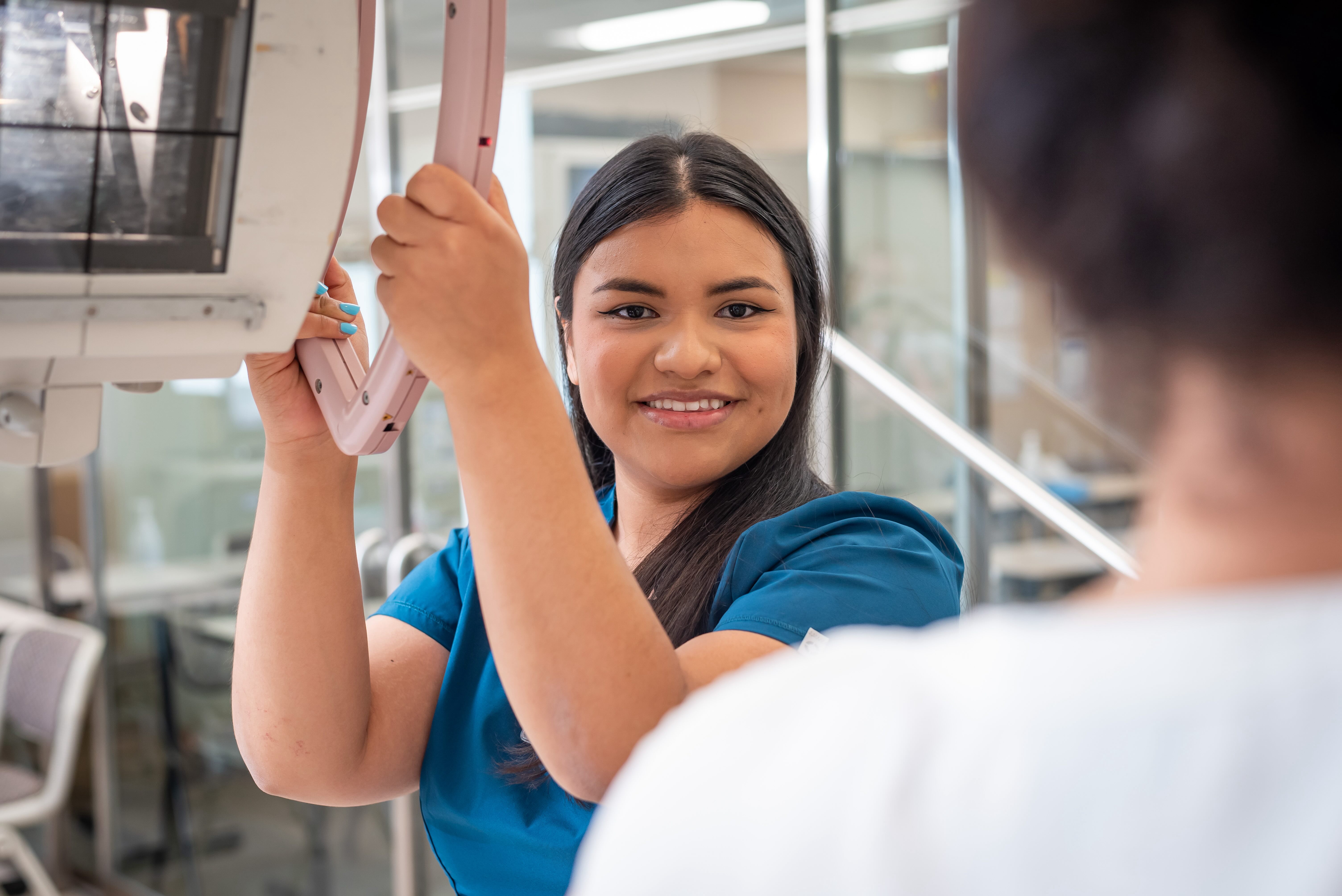BSHP Alumni Profile: Maria Cisneros Pito
Authored By: wells438 01/26/2024
At the intersection of technology and health care, there stands a professional who is a crucial bridge for patients and their care. In radiology, that’s the radiology technologist. Serving as that key advocate for patients was one of the biggest draws of radiography for 2021 UMR alumna Maria Cisneros Pito. “Radiography is more about compassion and care than people realize. You definitely have to be empathetic. We’re also the safety commissioners of our machines. We’re the watcher making sure the machine is doing what’s correct. We’re the ones making sure the scan is going well.”
Maria emigrated from Mexico with her family when she was three years old. She is among the first generation in her family to attend college, following in the footsteps of her two older brothers; one is now a nurse at Mayo Clinic, while the other is majoring in art history. Maria chose UMR because she was interested in the health sciences and wanted a structured college education close to home. The scholarships she received helped seal the deal.
UMR helped her discover career paths that she didn’t know existed. “I went in thinking I would maybe go into nursing. I wasn’t too happy with that path. I had shadowed a unit at Mayo Clinic and I couldn’t see myself in nursing for the rest of my life. Radiography clicked as soon as I started learning about the program.”
A career day at Mayo Clinic showed her a day in the life of a radiographer. “It appealed to me because it was a faster pace. You have more than one patient at one time and colleagues around you at all times, which I liked as well.”
After earning her bachelor’s degree in Health Professions in 2021, Maria passed the board exams to become a certified radiology technologist. She is employed by Mayo Clinic and specializes in computed tomography (CT). “CT is growing bigger and bigger — it’s one of those exams that are vital in health care. It’s basically a big X-ray machine that formats into 3D images, which radiologists can scroll through to see more detailed pictures of the body, soft tissue and internal organs.
Maria works at both St. Marys Hospital and the inpatient/outpatient clinic at Mayo Clinic’s Charlton Building. At St. Marys, she sees inpatients or people coming from the emergency department. Is there a typical day? Not really — which is part of the appeal for Maria. At St. Marys, she is stationed at her scanner and sees a variety of patients. A coordinator handles the roster of patients, and she is able to focus solely on each exam. “If it’s super busy, I’m running all day, trying to get exams as precisely and efficiently as I can. On a slower day, I’m waiting for exams to pop up.” At the Charlton Building, she’s in charge of scheduling and coordinating the mix of inpatients and outpatients. “It makes the day go faster — I’m never sitting down, but it can get stressful if I’m busy or running behind. I definitely never get bored.”
Which is a great thing for this self proclaimed extrovert. “I talk to a lot of patients and get conversations going. This is more of an interpersonal job. There’s always something going on.”
She thrives on bringing technology to directly serve people in some of their most vulnerable and frightening times. “A lot of our patients come in, and they’re easy-going, laughing. You’d be surprised because of what conditions they have. They’re just trying to get through the day. When we interact with them kindly, they appreciate it so much.”
She also enjoys working closely with colleagues. “There are usually two technologists for each scanner. It’s nice — if we have questions, we ask each other. There are usually at least four scanners in my area, and each of those has two technologists. So if our partner doesn’t know, we can ask others. We’re never alone. There are always people to call.”
She also values the opportunity to work alongside radiologists during procedures like biopsies, in which a radiographer such as herself is required to run the diagnostic imaging for the radiologist — a physician — who performs the procedure. “It’s really interesting to do because we see it in real time,” she says.
Maria credits the in-depth curriculum of UMR anatomy and physiology classes for giving her a strong foundation. “At the time it was extremely hard, but now I’m grateful. They definitely helped me. I can connect and understand a lot of things I now read in exams.”
And while Maria finds the new technologies of this evolving field exciting, like the brand new photon counting machine she uses to take more advanced, precise images, at the end of the day, it’s all about the people she serves. “I try to make it the best experience for them as possible. I get them a warm blanket and do little things they can look back and appreciate once the exam is over. So much relies on the person doing the exam. If we’re very positive and smiling, that can make or break a bad day.”
Read more stories from the Fall 2023 Alumni Magazine: The Kettle.